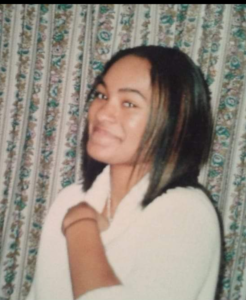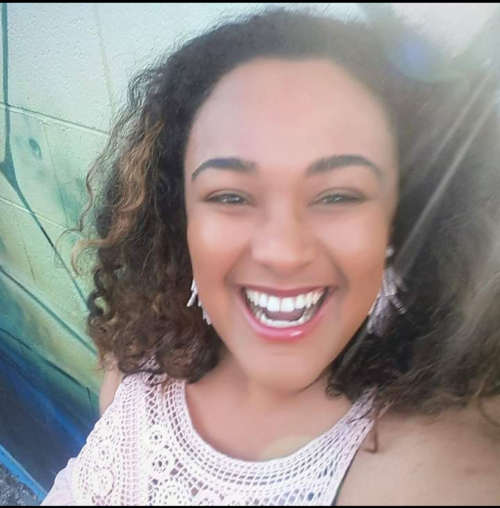My biological grandfather is an internationally known artist in New York City, and Ancestry DNA helped me prove it.
By Bianca Butler
As a young child, I didn’t know that my mother and her twin sister (now deceased) had been adopted in 1960. I found out in 2000, when, after nearly 40 years of silence, their biological mother wrote to the twins asking to reunite.
That year, when I was 12, we all met my biological grandmother for the first time at dinner in Old Town Sacramento—me, my mother, my aunt, my younger sister, and my adoptive grandmother. By meeting her biological mother, my mother learned her biological father’s identity and that she and her twin are of mixed-race ancestry: African American and white. Their biological mother had been a young African American college student at the University of California, Berkeley when she relinquished her twin daughters for adoption. They were born in a time in the United States when interracial unions were not only taboo but also illegal (Loving V Virginia) and when young unwed women were shamed and stigmatized—a time known as the Baby Scoop Era, from 1945 to 1973, before Roe V Wade in 1973.
My biological grandmother is a trailblazer. She was a college student and Delta Sigma Theta Sorority member at UC Berkeley from 1958 to 1962. She was the daughter of an educated Army chaplain, and her family deeply valued education. When she arrived at UC Berkeley in 1958 from Riverside, California, she was one of roughly 100 African American students on the campus. Berkeley, which she describes as having been bohemian at that time, was a different world to her than Riverside. There, she enjoyed ethnic foods along Telegraph Avenue and the poetry of the Beat writers such as Allen Ginsberg and Jack Kerouac.
On campus in her freshman year, my grandmother met an artist from the Midwest who found her attractive and wanted her to sit for a painting. (She still has this painting today). They had a casual friendship, a brief affair, and an unplanned pregnancy. A few months after giving birth, she decided it would be best to relinquish her newborn girls for adoption due to social pressures and lack of support. She went on to graduate from Berkeley in 1962, earning a bachelor of arts in political science. The twins were adopted together in a closed adoption by a loving and devoted African American family in the Bay Area.
In my late teens and college years, I became deeply curious about the origin story of my mother’s biological parents. Getting to know my grandmother, I was proud to discover we are at least three generations of college graduates. She, my mother, my younger sister, and I all have college degrees. My grandmother and my younger sister even have their master’s degrees. I’m extremely proud of that legacy. It’s one I want to pass on to the next generation.
Although I first learned about the identity of my mom’s biological father in 2000, I didn’t become interested in learning about him until I was in college and exploring my family history. To my surprise, I discovered that he’s an internationally known artist who lives near Central Park in Manhattan. He has a resume full of accolades and accomplishments in the art world spanning several decades.
I first tried to contact him in 2007, when I was in college. I wrote to him at the Manhattan studio address on his website, and when I received no response, I moved on. In 2018, I noticed he used an Instagram account to promote discounted custom portrait paintings of people and pets. I wanted him to do a painting of my mom, and I thought this would be a clever way to reach him. I sent a message on Instagram saying I was interested in a custom painting and asked how I could send him a photo. I was surprised that he responded quickly, and, as he instructed, I sent him two photos by email. But when it came time to make the $500.00 payment to him, I was hesitant to move forward, and he was upset because he’d already started the two portraits.
I finally gave in and sent him a sincere and heartfelt message revealing my identity as his biological granddaughter and the truth of why I had contacted him, and I included my phone number. Within a couple hours, he called me back. He immediately said he’d received my first communication—the letter I sent him in 2007, when I was in college. The crazy thing is, he told me, he received an email message a week earlier from my mom with her photo and a short letter saying she wanted to meet him. I had no idea my mom had been trying to contact him too.
In our phone conversation, he said he remembered very clearly having had an affair with my grandmother during the Berkeley years but denied that he was the father of the twins. We spoke for about 30 minutes and later communicated briefly through email, during which I asked jokingly if he grew up eating lefse (a popular Norwegian flatbread) and if he liked the music of ABBA. He said lefse was a special holiday treat in his family, and he never heard of ABBA. Even though the contact was brief, it felt good to finally hear his voice and to be acknowledged. The contact ended and he sent me a letter for my mother, his artist biography, one of his essays, a photo from his 20s, and the two portraits he painted of my mom—free of charge. I decided it was finally time to do an Ancestry DNA test to help me get more facts about my racial identity and heritage. The Ancestry DNA test confirmed that I’m 31% Norwegian and, through the DNA matches, that I’m related to his cousins. I sent him the DNA results, but he’s still in denial and, sadly, not open to a relationship.
Finding biological family and taking a DNA test can bring great joy and excitement, but it can also bring rejection and disappointment. With millions of people taking DNA tests such as those offered by 23andMe and Ancestry to reveal their heritage and find long lost relatives, it can be important for people testing to consider having a support system or a therapist to help cope with the possible emotional fallout. It can be very emotional opening up old generational wounds that still haven’t been healed. It’s important to prioritize your mental health and self-care in this process. I found talking with a therapist and supportive friends as well as writing to be helpful. Also, some people don’t want to be found, especially when race and adoption are factors, and I’ve had to accept that reality. I would love to have a relationship with my grandfather and learn about his life and his lifelong passion for art. I’d love to visit art galleries and travel to NYC, but that may never happen. It may be wishful thinking.
On a positive note, through Ancestry DNA I was amazed to connect with a cousin on my mom’s paternal side who is close to my age and open to connecting. She moved to Sacramento from Minnesota last year for graduate school, and we plan to meet. From her own ancestry research, she was able to give me more information about our shared heritage and ancestral homeland in Fresvik, Norway, which, in addition to Oslo, I hope to visit.
Even though my mom doesn’t talk about her childhood or her feelings about being adopted, I know it must have affected her. It’s been a long journey, but it’s given me deeper understanding, pride, and appreciation of who I am and my unique family history. I don’t know what the future holds or whether I will ever meet my biological grandfather, but I appreciate the contact I did have with him and his custom paintings of my mom, and I remain optimistic.
Bianca Butler is a SF Bay Area native raised in the suburbs of Sacramento, California. She’s a graduate of Mills College, an alumna of VONA, and a family historian. She enjoys non-fiction writing, digital storytelling, and public speaking. She plans to continue writing family stories about the legacy and lifelong impact of adoption. Butler dreams of doing ancestral homeland trips to West Africa and Norway and documenting the experience through writing and film. She lives in Sacramento, CA. Contact her at biancasoleil7@gmail.com.

Severance is not monetized—no subscriptions, no ads, no donations—therefore, all content is generously shared by the writers. If you have the resources and would like to help support the work, you can tip the writer.
On Venmo, @iambiancasoleil




